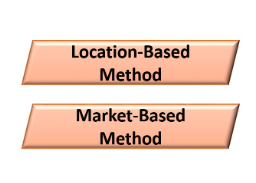Scope 2 Emissions Sources
Scope 2 emissions are a category of greenhouse gas emissions associated with the indirect energy use of an organization. These emissions are produced from the generation of purchased or acquired electricity, steam, heating, and cooling. Understanding the sources of Scope 2 emissions is crucial for organizations looking to assess and reduce their overall carbon footprint. Here are common sources of Scope 2 emissions:
- Purchased Electricity: The largest contributor to scope 2 emissions for your company is the electricity you purchase. Power facilities generate electricity by burning fossil fuels. This electricity is then provided off-site to a business. Consequently, the reporting company does not directly emit GHGs through its operations but is ultimately liable for such emissions due to energy demand.
- Purchased Steam: The use of boiled water (steam) for large-scale industrial processes, heating, and cleansing is extremely advantageous. The steam will be produced by combustion assets, such as a furnace or thermal power plant. Combining heat and power (CHP) facilities can produce multiple forms of energy and can supply to the local industries in that area. Energy purchasing companies can only utilize the energy supplied to them but consumer the company has no direct control over the energy supplied.
- Purchased Heat: There are numerous sources of heat that can be supplied to a business, but hot water is the most common. When provided by a third party via a local district heat network, associated emissions are classified as scope 2 emissions. Heat is also produced by the combustion of fossil fuels in the boilers and furnaces. CHP could be a type of energy supply source for this energy.
- Purchased Cooling – Cooling energy can be only transferred in the form of chilled water to an organization’s unit through a regional supply grid or a direct line connection.
Organizations need to quantify and report their Scope 2 emissions as part of a comprehensive greenhouse gas inventory. This allows them to identify opportunities for emission reductions, improve energy efficiency, and make informed decisions about sustainable energy sourcing. Many sustainability reporting frameworks, such as the Greenhouse Gas Protocol, provide guidelines for calculating and reporting Scope 2 emissions.
Types of energy access for industries
Based on the supply of electricity, reporting firms have two options for buying electricity. A location-based approach is used when the industry purchases electricity from a local grid; a market-based method is used when the industry purchases electricity from a private supplier with specific requirements.

